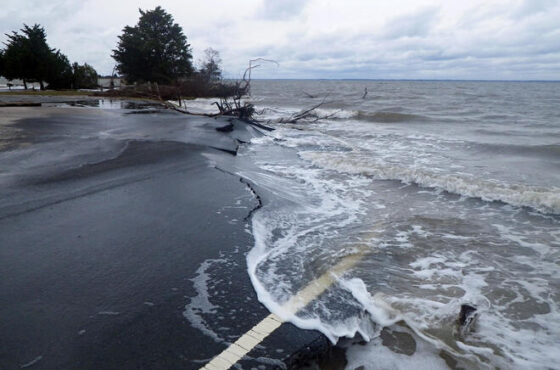Uncertainty Threatens To Make NY’s Solar Rates “Unbankable”
Published by the Natural Resources Defense Fund
New York’s process to set new utility bill credit rates for solar projects for communities, businesses, and factories has reached its critical implementation phase.
The New York Public Service Commission issued an order issued on March 9 that sets up general rules for crediting mid-size solar projects: the kind found on big box stores, apartment buildings, and plots of land near communities. (While individual customers can sign up to receive output from the projects, the rules don’t cover smaller rooftop panel systems on houses and small businesses, or large projects more comparable to conventional power plants.) The order sets up the general framework by which the projects will earn credits (for example by saying what categories of benefits they will receive credit for), but doesn’t provide the specific credit formulas (i.e. $/kWh) that will ultimately provide the monetary values the projects will earn based on their performance. The implementation process, which sets those formulas, will make or break new projects by determining whether their investments in new solar projects pencil out. Based on the utilities’ implementation plans announced thus far, we are concerned that without further action by the Commission, too much uncertainty in the credit structure will make it less successful than it could be in driving further solar growth.
NRDC is optimistic that, together with other efforts the state is making to support solar, the order contains enough key ingredients to ensure the continued growth of the industry in New York. But risks remain.
When the state’s utilities unveiled some of the details of their anticipated implementation approach, it became clear that at least one important component of the rates may be too uncertain to support financing new projects. In issuing an Implementation Order that finalizes these rates (expected late this summer), the Commission should adopt rules that facilitate greater certainty so as to ensure the success of its experiment with these new “value-based” rates.
New York’s “Value Stack”
The framework adopted by the Commission gives eligible new projects credits to be passed onto participating customers’ bills based on the many different values that they provide to the electricity system and to society. The new rate structure will replace traditional “net metering” rates, which credit projects at the retail rate by effectively running customers’ electricity meters backward when a project sends excess solar production back into the system. The new system is more accurate, but also more complex (for more details, see my prior blog).
The values included within the new credit structure include:
- Avoided energy (the ability of these systems to offset wholesale purchases of electricity that the state’s utilities would otherwise have to make to meet customer needs);
- Avoided capacity (the ability to offset the need for backup power plants or other resources that would otherwise be needed to ensure that the lights don’t go out);
- Distribution system value (the ability to offset the need for poles, wires, substations, and other infrastructure that would otherwise be necessary to send electricity from power plants located further from end use customers);
- Environmental value (avoided carbon emissions and other pollutants); and
- A market transition credit (designed to capture values that are hard to assess and are not reflected in the formulas used to estimate the other components, and to ensure the continued growth of the industry as it transitions from net metering).

New York’s Solar Value Stack
The Commission’s March 9 order set up the general framework for calculating each of these value components, but it left the details to the implementation phase now underway. Amidst the dizzying array of acronyms representing different components of project value, solar developers need to understand the financial basics of the credits: what will the specific rates be and how will they vary by location? That’s where the implementation phase comes in, and why it is so critical. Once implementation is complete, project developers will know the specific monetary credit value that the projects will earn based on their performance.
For example, for distribution system value, the order states that projects located at particularly constrained areas of a utility’s system will get a Locational System Relief Value (LSRV) credit that accounts for their ability to relieve grid congestion in that area. A separate Demand Reduction Value (DRV) credit will account for more general system value that is not location specific and accounts for reduced congestion within each utility’s broader service territory. Both credits are to be earned based on the system’s performance during the times when the local wires are particularly stressed, with their $/kWh value earned during those times to be derived from utilities’ Marginal Cost of Service Studies, which are analyses that each utility conducts to calculate the cost of infrastructure upgrades necessary to meet continuing service needs.
The Commission’s order directed the utilities to show their work behind the Marginal Cost of Service Studies by publicly filing their data and methodologies for calculating service costs. Further, it required the utilities to designate which locations are particularly constrained, where projects are eligible for the LSRV, and which locations only generate DRV credits.
For instance, here are Con Edison’s proposed high-value areas:

Con Edison’s proposed high-value “LSRV” areas
Joint Utilities of New York
Our basic working assumption had been that after evaluating the utilities’ proposals, the Commission could establish clear rules for how system value would be divided between DRV and LSRV for each utility, and provide structure for how values might change such that developers assessing the merits of a project could obtain financing by assessing the current credit value and predicting future credit values.
But when the utilities presented their plans at a technical conference held by the Commission, they left us with more questions than answers. One clear difficulty is that some utilities are much further ahead in the process of teasing out specific locational values than others. Central Hudson, for example, has significantly more granular information than some of the other utilities. Because of this, uniform rules could force the process to the lowest common denominator, where fewer LSRV credits are supplied because some utilities are further behind in calculating differences in value for particularly constrained areas. Rules for how DRV and LSRV may be updated in the future risk being overly rigid given the substantial work in identifying system values that is still left to be done and the uncertainty regarding what division will ultimately be most optimal.
Without specific rules, however, there needs to be some other means of providing developers with certainty. Otherwise, they will have no way of knowing whether DRV credits provided to them in the first few years of a project’s operation will continue to be provided when utilities update their Marginal Cost of Service studies in future years and identify more high-value system locations (thereby potentially transferring value captured in DRV credits during the initial years of a project’s operation to LSRV credits in other areas of the system that the project cannot access).
Without some ability to predict future credits, developers can’t count on the revenue from those credits, and accordingly won’t be able to access financing for their projects based on them. The credits will not be as effective in supporting new projects as they would be under a system with greater certainty, and New York will get fewer new solar projects (as well as fewer projects per dollar of credit it grants them).
A telling moment occurred in the technical conference discussing the implementation process when a solar developer asked a representative of the New York Green Bank how it would view a project proposal supported by the new rate structure. The representative said that, based on what we know at this point in the process, such a project would not be “bankable.” That’s financial jargon meaning that no bank would give such a project a loan based on the revenues it anticipates receiving from the credits. If banks don’t finance these projects, that could cripple New York’s plans for solar, which are relying heavily on the community, commercial and industrial projects covered by the new rates.
Accordingly, it is critical that in finalizing the implementation of its order, the Commission do something to provide greater certainty about a project’s distribution value. Together with other environmental and solar advocates, we submitted comments offering a variety of different ideas for how it could do so. The most promising approach would be to set the credit formula for distribution value for a project at the time it is built, such that future changes in apportionment of DRV credit versus LSRV credit would not affect that particular project, even as the updated formula applied to new ones. While this sacrifices a little bit from an accuracy perspective, that slight downside would be more than made up for in the benefits gained by greater certainty.
This distribution value conundrum is just one of the many challenges facing the Commission as it implements the March 9 order. Our comments also address many of the other challenges. Establishing a value-based credit structure is not for the faint hearted! We look forward to working with Commission staff, utilities, and other stakeholders as we hammer out the details together.
Related Blog Posts
Read the full article at: https://www.nrdc.org/experts/miles-farmer/uncertainty-threatens-make-nys-solar-rates-unbankable




